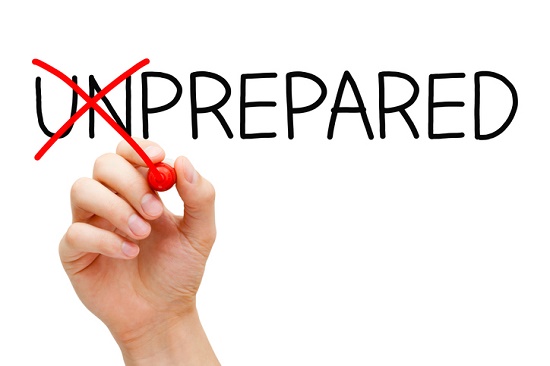
Getting your first (or even second) set of hearing aids is an intensely personal process that requires being informed and making a lot of important decisions. There is no “one-size-fits-all” approach whatsoever. Get the facts here and prepare yourself for the process by working with a skilled hearing care professional who has your needs at heart.
Use this handy guide to help you get the most out of your new hearing aids.
Prepare ahead of your appointment
First, you’ll schedule a hearing test with your trusted hearing care professional. During that appointment, he or she will evaluate your hearing, review the results with you and help you decide whether or not now would be the best time for you to get hearing aids or not.
Before you go to this appointment, draw up a list of questions (like these) so that you can go into the process informed and ready:
- What type of hearing loss do I have? Is it mild, moderate, severe, or profound?
- Can hearing aids help, and do I need one for both ears?
- What hearing aids would best fit my needs?
- How should I decide to balance desired features with my budget?
- How should I pay for my hearing aids? (Insurance, credit, installment plans, state programs, etc.)
At your hearing test appointment
If your hearing tests do not discover any hearing loss at this time, you probably don’t need hearing aids now, but at least you’ll now have a baseline with which to compare with any future tests.
But if you do test positive for hearing loss, now is the time to consider how hearing aids might help. Work with your hearing care professional through the following list of considerations (don’t skip any) so that you can be sure to get the best hearing aid solution for your situation:
- Programmability – Most of today’s hearing aid models are digital and programmable to match the exact profile of your type of hearing loss. This is crucially important for your success; if anyone tries to sell you a hearing instrument out of the box with no customizations, it’s not going to work for you as well as it could.
- Style – hearing aids come in several sizes and styles, from models that sit behind the ear to models that fit entirely within the ear canal. You’ll want to weight ease-of-use, functionality, aesthetics and price when deciding on hearing aid models.
- Wireless connectivity – several hearing aid models can hook up wirelessly to compatible smartphones. This gives you the options to discreetly control volume and settings, send phone calls directly to your hearing aids, and even stream music all without any wires or the need for a separate hearing aid remote control.
- Advanced features – some hearing aids come equipped with additional advanced features, like directional microphones to enhance speech, background noise reduction, environmental settings, and telecoils for clearer phone calls. You may also want to forgo some of these options and opt for a more cost-effective model.
This may all seem confusing, but your hearing care professional is trained to help guide you through the decision-making process. Of course, if someone tries to rush or steer you to a decision without addressing your questions, that should be a red flag.
Your new hearing aids at home
After selecting your hearing aids and getting them customized for you by your hearing care professional, it’s time to take them home and start wearing them day-to-day. As you do, keep the following two thoughts in mind:
First, don’t expect to fall in love with your hearing aids immediately. You won’t. You’ll probably be surprised by all the “new” sounds you’re hearing again after years of not hearing them. This is perfectly normal and, after a few weeks, you’ll enjoy this enhanced hearing experience.
When you first get your hearing aids, start off with some quiet experiments at home. Try watching a quieter movie and focus on dialog and small sounds. Have a one-on-one chat with a friend in a quiet room, and try listening to music and picking out or following certain instruments.
Even though it may be uncomfortable at first, you should try to wear your hearing aids as much of the day as possible, putting them in when you wake up and taking them out before bed. This will speed up the adjustment process, and after a few weeks, the effort will pay off and your hearing aids will feel more natural.
Also remember that your hearing aids can be adjusted, so if you continue to have difficulty hearing or adapting to the new sound, schedule a follow-up visit with your hearing care professional to fine-tune the settings.
Second, to ensure continued performance, you’ll need to properly maintain and care for your new hearing aids. This means daily cleaning, proper storage, and managing your battery supply.
You can make these tasks easier on yourself with the right tools and habits. Hearing aid cleaning kits, storage cases/sanitizers, and batteries can all be supplied, with tips, from your hearing care professional.
After a short adjustment period, you’ll really start enjoying all the improved hearing benefits of your new hearing aids. If you have more questions about hearing aids, or the process of acquiring them, give us a call!
